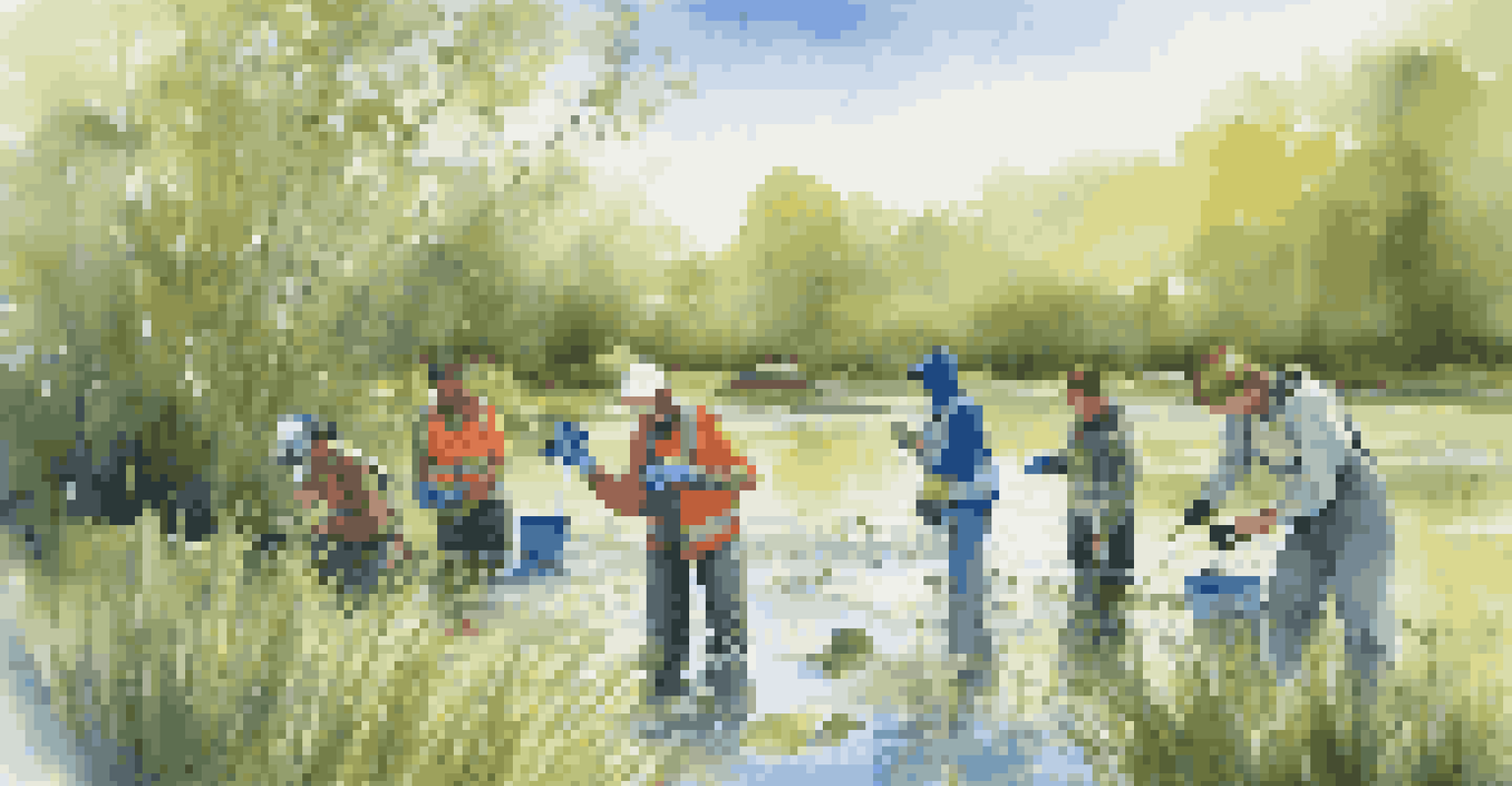Integrating Environmental Studies into STEM Education Frameworks

The Importance of Environmental Studies in STEM Education
Integrating environmental studies into STEM education is crucial for nurturing future innovators. As global challenges like climate change and biodiversity loss escalate, understanding these issues becomes essential for students. By incorporating environmental studies, we equip learners with the skills they need to tackle real-world problems.
Education is the most powerful weapon which you can use to change the world.
Moreover, this integration helps students see the interconnectedness of various disciplines. For instance, learning about ecosystem dynamics can enhance understanding in biology, chemistry, and physics. Such holistic education fosters critical thinking and problem-solving abilities, essential for any STEM career.
Ultimately, environmental studies enrich the STEM curriculum, making it relevant and engaging. Students not only gain knowledge but also develop a sense of responsibility and stewardship toward the planet. This approach is vital in preparing them to become conscientious leaders in their fields.
Real-World Applications of Environmental STEM Education
One of the most compelling aspects of integrating environmental studies is its practical application. For example, students can engage in projects like designing renewable energy systems or conducting local biodiversity assessments. These hands-on experiences reinforce classroom learning and highlight the relevance of STEM in addressing environmental issues.

Furthermore, real-world applications foster collaboration among students. Working in teams to develop sustainable solutions encourages communication and teamwork—skills that are invaluable in any professional setting. This collaborative spirit is a core component of successful STEM initiatives.
Integrating Environmental Studies
Incorporating environmental studies into STEM education equips students with essential skills to address real-world challenges like climate change.
Additionally, these projects often lead to community engagement, where students can present their findings or solutions to local stakeholders. It creates a sense of ownership and pride in their work, motivating them to pursue further studies in STEM fields. Engagement with community issues also helps bridge the gap between education and real-life challenges.
Creating Interdisciplinary Curricula for Environmental STEM
Developing an interdisciplinary curriculum that includes environmental studies within STEM can be both exciting and challenging. Educators can start by identifying common themes across subjects, such as energy, ecosystems, or sustainability. By creating connections, lessons can be designed to engage students in a more meaningful way.
We do not inherit the earth from our ancestors; we borrow it from our children.
For instance, a unit on climate change could incorporate data analysis in math, scientific inquiry in biology, and critical discussions in social studies. This approach not only enhances understanding but also prepares students for the complexities of real-world problems. The more interconnected the lessons, the more impactful they become.
Moreover, interdisciplinary curricula can help break down silos between subjects, fostering a culture of collaboration among educators. This teamwork can lead to innovative teaching strategies and assessments, ultimately enriching the student experience. The goal is to create an educational environment where students see the relevance of each discipline in addressing environmental challenges.
The Role of Technology in Environmental STEM Education
Technology plays a pivotal role in enhancing environmental studies within STEM education. Tools like simulation software, data analysis programs, and interactive models allow students to visualize complex systems and scenarios. This technological integration makes learning more dynamic and accessible.
Additionally, technology facilitates collaboration and data sharing among students worldwide. Platforms for virtual projects enable learners to tackle global environmental issues together, fostering a sense of global citizenship. They can analyze data from different regions, compare findings, and propose solutions on a larger scale.
Real-World Applications Matter
Hands-on projects in environmental STEM education foster collaboration and connect classroom learning with community engagement.
Furthermore, utilizing technology in the classroom prepares students for the tech-driven job market. Skills in software usage and data interpretation are increasingly valuable in various STEM careers. By blending technology with environmental studies, we are not only enhancing education but also equipping students with essential skills for their future.
Engaging Students Through Field Experiences
Field experiences are an essential component of integrating environmental studies into STEM education. Taking students outside the classroom to observe ecosystems, conduct experiments, or participate in conservation efforts creates memorable learning moments. These experiences connect theoretical knowledge with practical application in the natural world.
For example, students might visit local wetlands to study water quality or participate in tree planting initiatives. Such activities not only deepen their understanding of environmental concepts but also foster a sense of responsibility and connection to their community. Students often return from these experiences with a renewed passion for STEM subjects.
Moreover, field experiences can inspire students to pursue careers in environmental science and related fields. Exposure to real-world applications and professionals in the field can ignite a spark of interest, leading them to explore further. This hands-on approach to learning is vital for cultivating the next generation of environmental stewards.
Promoting Sustainability in STEM Education Practices
Sustainability should be at the forefront of STEM education practices. By modeling sustainable practices within educational institutions, we teach students the importance of conservation and responsible resource use. This includes everything from reducing waste to integrating renewable energy solutions in school facilities.
Incorporating sustainability into the curriculum can also be achieved through project-based learning. Students can work on initiatives that promote sustainability, such as creating recycling programs or developing energy-efficient designs. These projects not only enhance learning but also instill a sense of agency in students, showing them they can make a difference.
Sustainability in Education Practices
Modeling sustainability within educational institutions prepares students for future challenges and promotes responsible resource use.
Additionally, promoting sustainability in STEM education prepares students for future challenges. As industries move towards greener practices, having a solid foundation in sustainability will be an asset. Ultimately, integrating sustainability into the educational framework aligns with the global push for a more sustainable future.
Challenges and Solutions in Integrating Environmental Studies
While the integration of environmental studies into STEM education is beneficial, it does come with challenges. One significant hurdle is the lack of resources or training for educators to effectively teach these subjects. Many teachers may feel overwhelmed by the breadth of knowledge required to cover both STEM and environmental content.
To address this issue, professional development and training programs can be implemented. These programs can provide educators with the necessary tools, resources, and confidence to teach interdisciplinary subjects. Collaboration with environmental organizations can also offer additional support and expertise in the classroom.

Furthermore, integrating environmental studies can be time-consuming, often requiring a shift in traditional curricula. Schools can overcome this by starting small—implementing pilot programs or specific units that highlight environmental themes. Gradually, these can expand into more comprehensive programs, making the transition smoother for both educators and students.